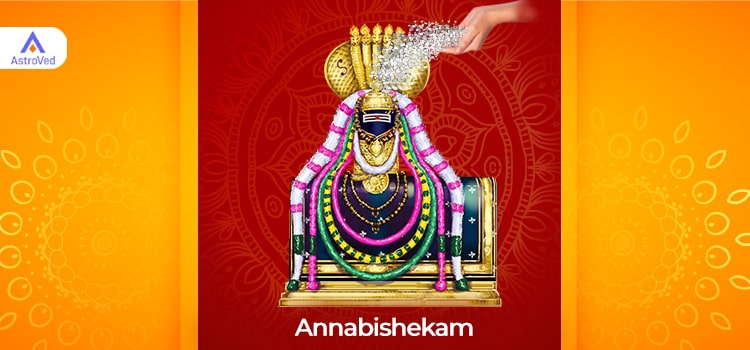Aippasi Annabishekam For Lord Shiva
What is Annabishekam?
‘Annam’ means ‘rice’ and ‘Abishekam’ means ‘ritual bath for a deity’. Annabishekam is the process of bathing the idol of a deity with cooked rice. This sacred ritual is usually performed on the Poornima or full moon day in the Tamil month of Aippasi (Oct - Nov).
Aippasi Purnima 2023 falls on October 28 (Saturday). On this day, Annabishekam is celebrated with great zeal in all Shaivite temples. Rice is supposedly the most important kind of prasadam as it is the favorite of Shiva.
Annabishekam is usually performed on the Shiva Lingam in Shiva temples in South India. It is believed that one can gain relief from one’s problems by performing this ritual once a year. This ritual is also called Shiva Abishekam or Maha Annabishekam.

Significance of Anna Abhishekam
According to the Scriptures, rice signifies life and prosperity. Shiva is said to be very fond of hydration rituals or Abishekams. Eleven sacred items are used to perform Abishekam for Shiva. They include holy water, ghee, cow’s milk, coconut water, sugarcane juice, curd, sandalwood paste, Vibhuti (sacred ash), Panchamirtam (mixture of 5 items), rice, mango powder, and turmeric. Hindus believe that one’s mind resembles the food he consumes. The ritual of Annabishekam highlights the significance and key role of rice in human life. Annabishekam is also a way to sanctify the presiding deity, so that it can absorb more positive energy.Annabishekam is an annual ritual.
Annabishekam acts as a gesture of gratitude to Shiva is the protector of all life forms and the five elements in Nature. Hence, the ritual is also a way of expressing gratitude to him. Also, rice is a product of the union of the Panchabhootas or 5 natural elements. To create it, first we sow the seed in the earth. Then it is nourished by water from the sky, and fire (energy) from the Sun. The wind helps transformed it into paddy. The paddy grains are processed into rice and it nourishes all living beings. Hence, Annabishekam has great significance in Hinduism.
Shiva himself has stated that he likes this food as it provides energy to the whole Universe and goodness to everyone. He also calls on devotees to do Pooja to him with this food and asks them not to forget that food is his special roopam or form.
According to the Agama Shastras, on the Pournami or full-moon day coinciding with Ashwini Nakshatra during Aippasi month, offering rice annam to Shiva can bring abundant crops and boost economic progress.
Annabishekam is a special ritual for invoking Shiva’s blessings. During the ritual, the Shiva Lingam, which is the phallic symbol of Shiva, is bathed with the traditional hydration items like holy water, turmeric powder, sandalwood paste, milk, orange juice, honey, coconut water, curd and Vibhuti. Once it is over, the idol is completely covered with cooked rice and different vegetables that adorn the top of the Lingam.
The ritual ends with the performance of Aarti (light offering) to Shiva, and the covered rice is given as Prasad (offering) to everyone. Not even a single grain goes waste.
Thousands of devotees come to see this ritual being performed on the huge Shiva Lingam at the renowned Brihadeeshwarar Temple in Thanjavur, Tamil Nadu. Brihadeeswarar is the presiding deity of the temple. He is completely covered with cooked rice and boiled vegetables from the garland. During the ritual, “Sri Rudram” is chanted continuously. Devotees can also see this ceremony at all Shiva temples in Thanjavur, Thiruvarur and Nagapattinam districts.
Benefits of Performing Annabishekam
Performing or taking part in the Annabishekam rituals can bring many benefits:
· It removes karmic problems and brings inner peace
· It can resolve issues in business and attract prosperity
· Consuming the Abishekam Prasad can boost memory in children
· Prosperity in agriculture and ensure security of grains
· It bestows progeny blessings
· It can ensure abundance of food




















